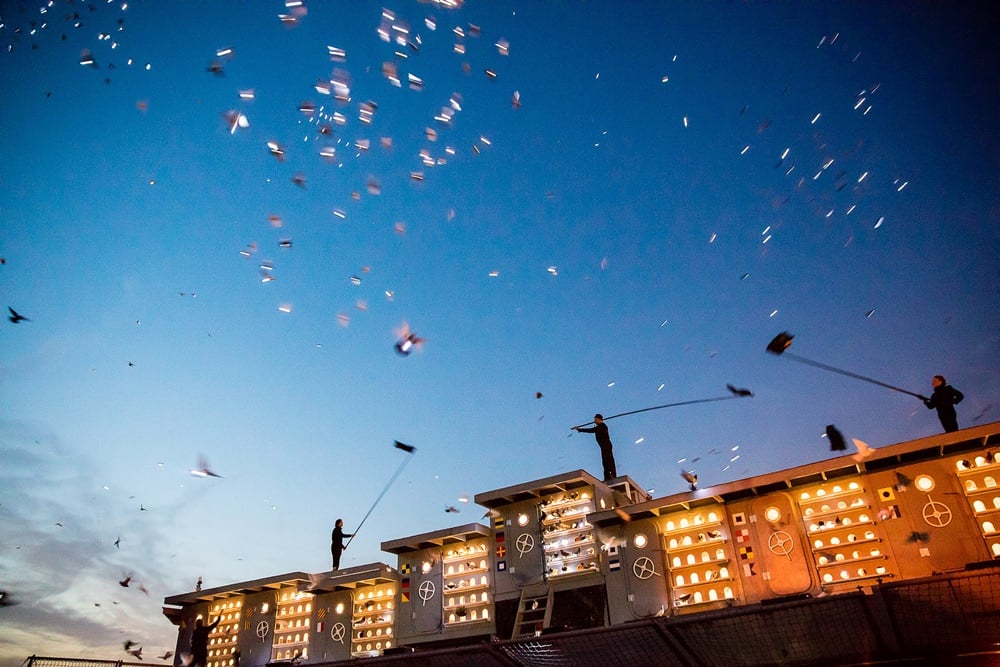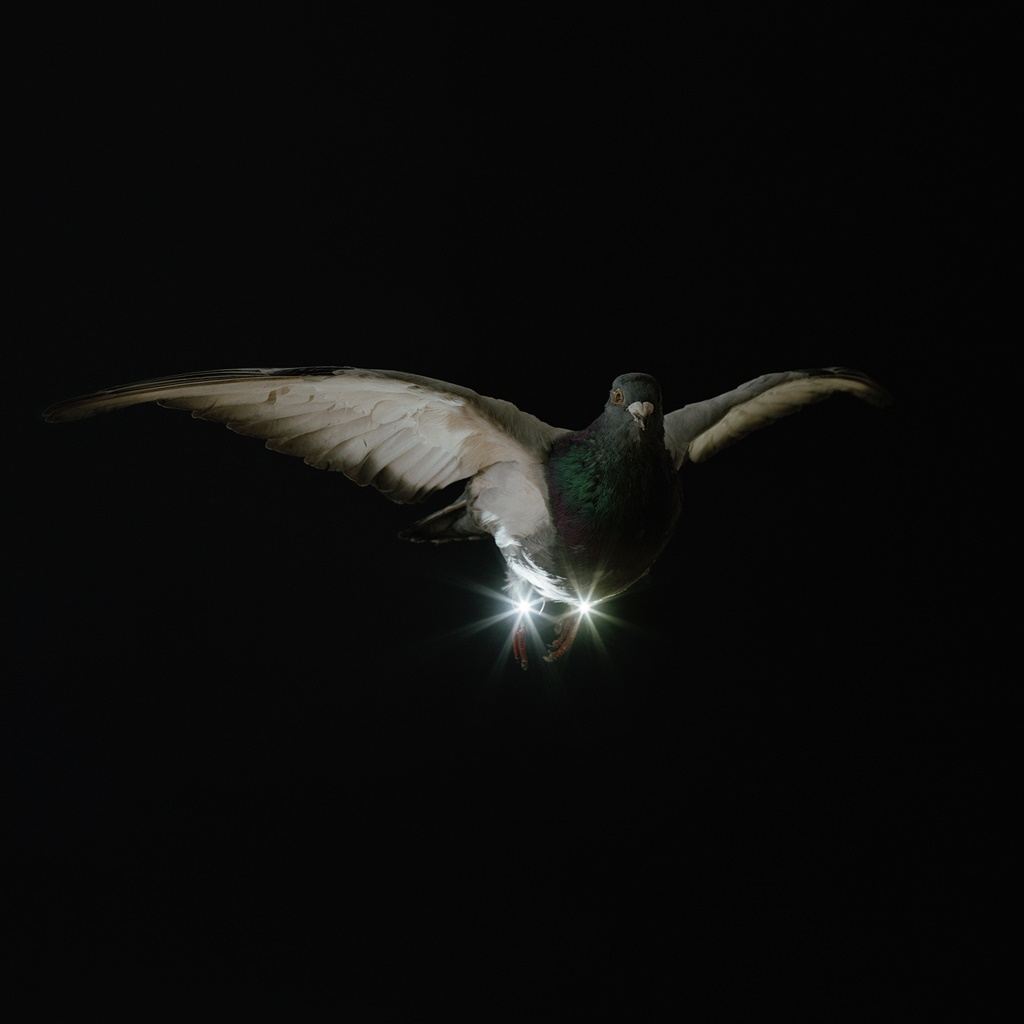Art World
Is this Dutch Artist Accusing Duke Riley of Pigeon Plagiarism?
A lawyer says you can't copyright an idea.

A lawyer says you can't copyright an idea.

Brian Boucher

New York artist Duke Riley has gained widespread attention for Fly By Night, his current project with Creative Time. For the piece, he conducts a sort of symphony in light over the Brooklyn Navy Yard by herding thousands of carrier pigeons with LED lights attached to their legs in a dance in the evening sky.
But Dutch artist Jasper van den Brink says Riley’s idea is “identical” to one of his own, and he’s got a publication, in a 2006 issue of the New York magazine Cabinet, to prove it. Van den Brink wanted to attach LED lights to pigeons’ legs and release a flock of them into the night sky above Stockholm, Sweden.
Van den Brink also hints darkly that someone from Riley’s team may have contacted him under a false identity.
“It might be pure coincidence, but I received a strange email two months ago inquiring about this project and the sender cannot be traced,” says van den Brink in a statement sent to artnet News. The email came from someone identifying himself as Brooklyn artist David Weiser, he says, and requested permission to perform van den Brink’s project. Van den Brink says he can find no such artist.
In the end, Van den Brink never did execute the pigeon dance.
“Unfortunately, I ended up canceling the project,” van den Brink writes in the Cabinet article. “It turned out that pigeons cannot easily find their way home in the dark because they navigate by the sun.” He added that his research was ongoing, but apparently has not borne fruit in the decade that has passed since then.
Van den Brink also observes that Creative Time artistic director Nato Thompson published an essay in the very issue of Cabinet in which his project appeared.
“I have immense respect for Cabinet, as I do for the numerous other magazines and journals I have contributed to over the years,” Thompson said in a statement to artnet News. “It’s a reality of the rich ecosystem (and unstable finances) of arts publications that a writer has to write for many at the same time. While I wish I could say that I remember the content of all that I’ve contributed to, it’d simply be impossible.”
A representative of Creative Time points out that Riley’s project was announced in February and that plans were well under way before the supposed email, adding that Riley would have no need of logistical advice or permission from someone who had never actually executed the project. Riley has executed pigeon-related projects for years, the representative points out, while keeping pigeons himself all along.

Jasper van den Brink, Pigeons Don’t Fly at Night, 2005. Courtesy the artist.
When Van den Brink heard about the project, the artist says he had his legal advisor contact Creative Time in an attempt to reach a “friendly solution.” In her reply, Creative Time executive director Katie Hollander denied any connection between the projects.
Since Van den Brink never got his piece off the ground, one intellectual property expert says, he doesn’t have a case.
“You can’t copyright an idea,” New York University professor Amy Adler told the New York Times. “If you allowed anyone with an idea to stop other people from making work, creative expression would grind to a halt.”
Riley says he was unaware of Van den Brink’s work.
“In my years and years of my researching for this project, I have never, ever, ever come across anything to do with this guy,” Riley told artnet News Tuesday.
“I don’t read Cabinet,” he added. “I read pigeon magazines and I know a lot about ‘em. I don’t read too many art magazines.”
Riley’s project continues on weekends through June 12.